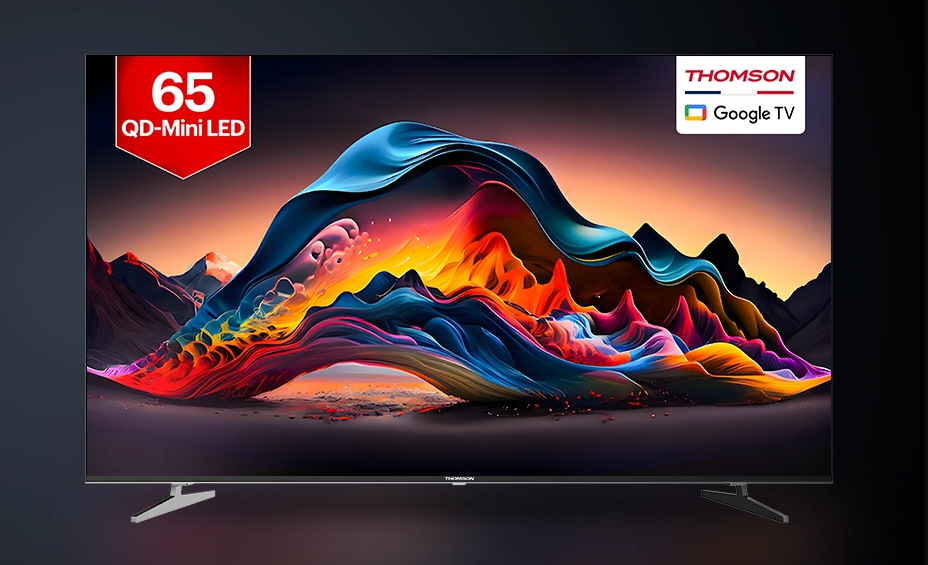What is HDR technology for TVs and what are the differences between HDR10 and Dolby Vision
By now all the new Smart TVs on sale support HDR technology, one of the most interesting features that have appeared in recent years together with 4K UHD (with which they go hand in hand more and more often). Although for many HDR it means nothing with it active on our TV we will get a superior image quality at any resolution level and easily adaptable even on streaming streams (now constantly growing).

While looking at the datasheet of a Blu-ray or streaming content in search of the definition of HDR we noticed some strange acronyms, called HDR10 or Dolby Vision: what did they identify? What’s the difference between them? In this guide, we will try to show you the advantages of HDR technology and how it is implemented in multimedia content and on televisions so that you know exactly which television to aim for the next time we go to the mall or order the new TV on Amazon.
Guide to HDR technology
In the following chapters, we will talk to you in simple words about HDR technology, why it is so important on modern Smart TVs, and how it is implemented through the most popular technologies, namely HDR10 and Dolby Vision. In the final chapters, we will show you some TVs with the two technologies and our opinion on the quality offered by the two technologies and why it is better to focus on one over the other.
What is HDR
HDR technology identifies the Wide Dynamic Range (this is the meaning of the acronym from the English), which is a much wider range of colors than that normally obtainable with a standard shooting.
To be able to admire this riot of colors we must reproduce content shot with HDR cameras (maximum quality) or reproduce content to which an HDR filter has been applied in post-production (lower quality). If the content is available in HDR, simply play it back on an HDR-compatible TV to benefit from the enhanced color gamut. Not all HDRs are the same! As often happens in the technological field, two different implementations of the technology have been developed: HDR10 and Dolby Vision, both with pros and cons (which we will show you in the following chapters).
What does HDR10 stand for
With HDR10 we identify the starting technology of HDR, the one with the greatest support and the greatest compatibility since it is available for free (under an open-source license).
With this technology, we will obtain a maximum brightness of the images equal to 1000 nits and we will obtain static metadata: this means that the application of HDR takes place by taking only the initial scenes, to then be applied to all the other scenes. To curb the competition from Dolby Vision, the HDR10 + update has been released, which provides dynamic metadata and significantly increases the maximum brightness for a scene.
HDR10 is free so it is very popular in YouTube videos but also on streaming platforms such as Amazon Prime Video and Netflix. From the point of view of TV support, it is a reference point for Samsung TVs, which only support HDR10 and HDR10 + (rejecting any type of support for Dolby Vision); in addition to Samsung, we find HDR10 on practically any TV on the market that boasts the initials HDR on the package.
What does Dolby Vision stand for
With Dolby Vision, we identify a proprietary technology (therefore applicable only upon payment of user licenses) with which it is possible to exploit HDR with higher image quality.
With this technology, we will get a brightness always higher than 4000 nits and dynamic metadata, which allow HDR to adapt better in the most colorful scenes during playback. This technology is undoubtedly the best currently available on the market but the presence of a license to be paid for each use has hampered its use (at least at the beginning); to this, we add that HDR10 + and Dolby Vision are very similar and we will hardly be able to grasp the difference between the two technologies (which is very evident if you make a comparison between HDR10 and Dolby Vision). The evolution of this technology is called Dolby Vision IQ and offers even more dynamic range and brightness, even if it has not yet spread like the first.
The diffusion is less than HDR10 but it is clearly outclassing HDR10 +, which on paper is its main rival in terms of quality: despite the licenses to be paid, Dolby Vision is supported by all high-end TVs produced by LG, Sony, TCL, Hisense, Panasonic, and Philips, while Samsung is completely missing for commercial choice. Speaking of multimedia content, it is currently possible to find Dolby Vision movies and TV series on Netflix and Disney +, with some content also available on Amazon Prime Video.




